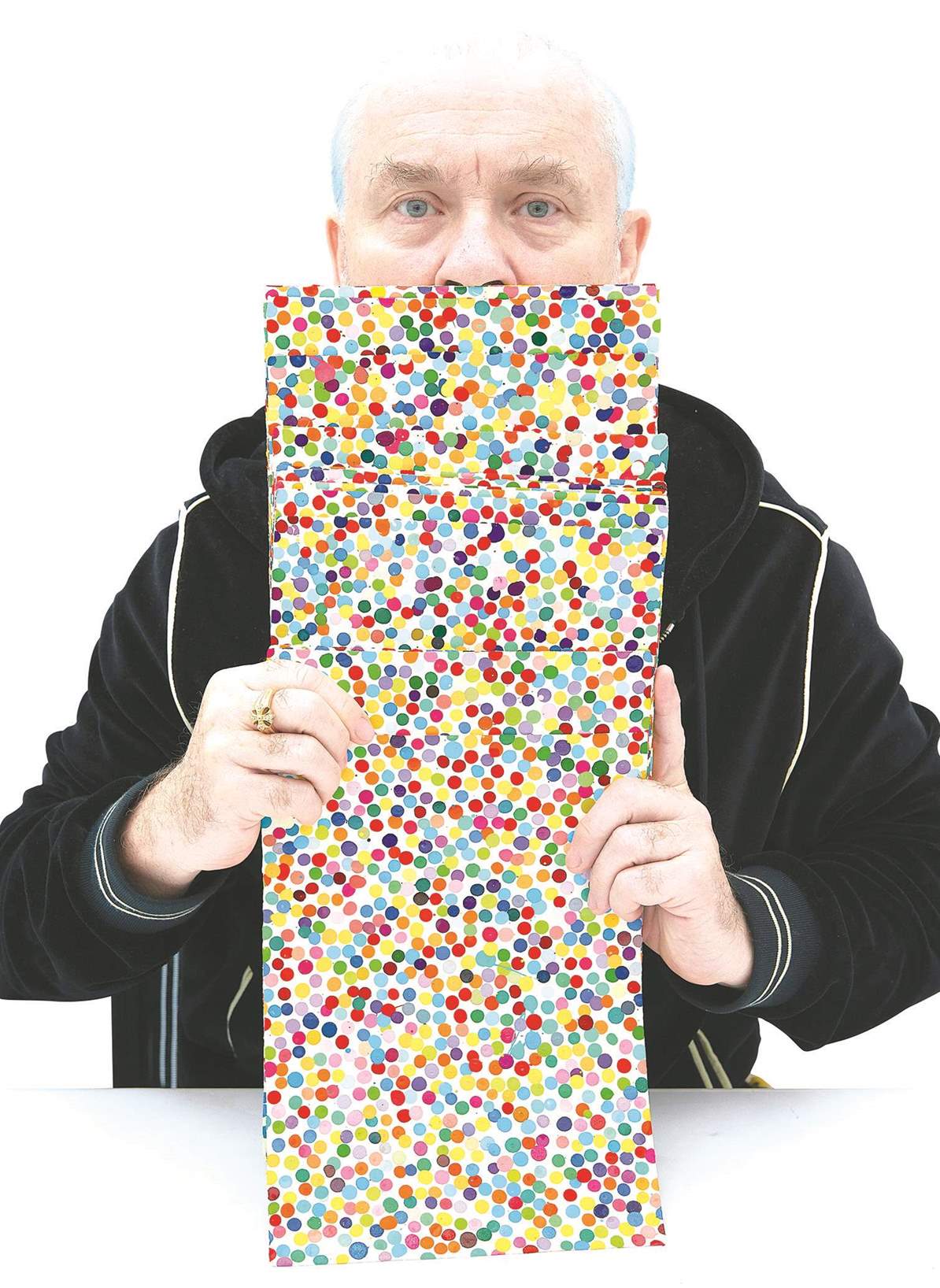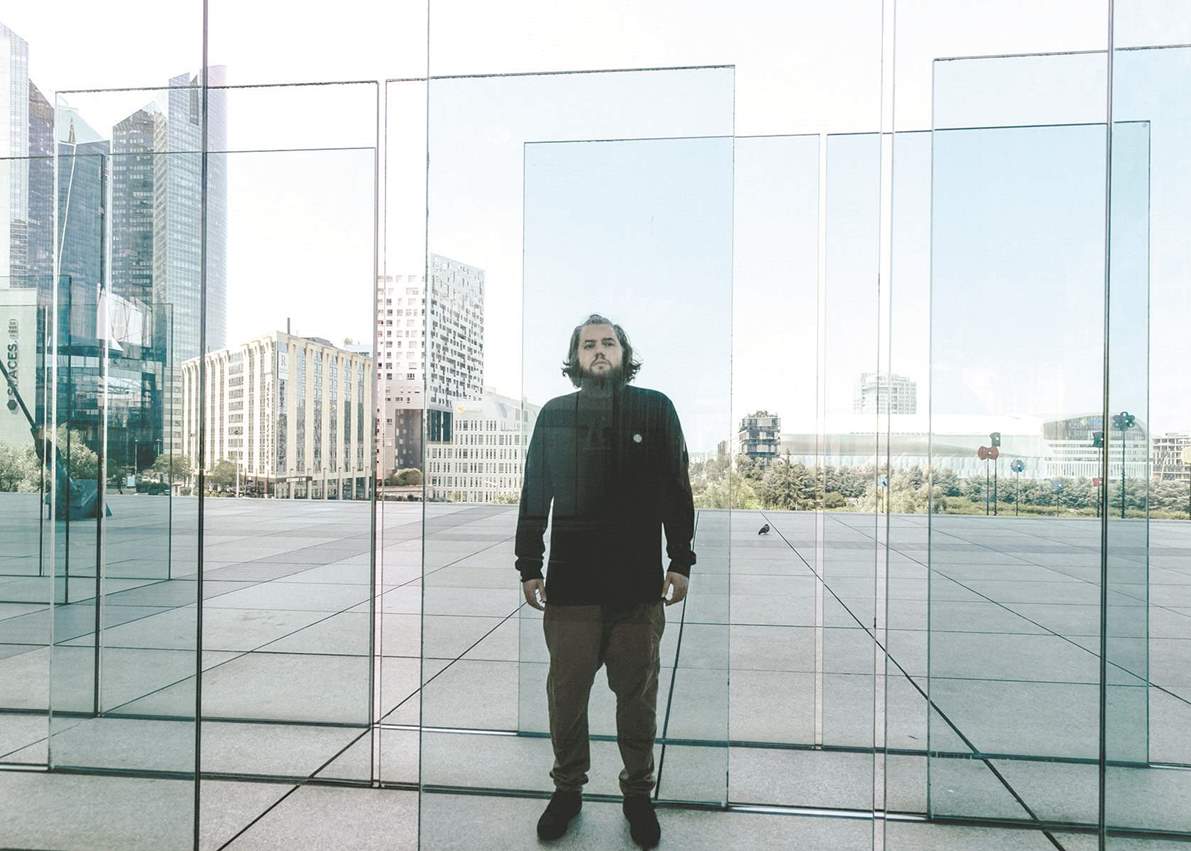British artist Damien Hirst, best known for putting a shark
in a tank of formaldehyde, has gotten on the
NFT bandwagon.
اضافة اعلان
NFTs, or non-fungible tokens, rely on blockchain technology
to designate an official copy of a piece of digital media that would otherwise
be cheap or free. Hirst is selling a collection of 10,000 NFTs, each of which
corresponds to a physical dot painting, for $2,000 each. A year from now, the
collectors of the series, called “The Currency,” will have to decide whether to
keep the NFT or the painting; whichever one they do not choose will be
destroyed.
 An image provided by HENI shows the British artist Damien
Hirsch, who is selling a collection of 10,000 NFTs which correspond to 10,000
dot paintings, for $2,000 each. (Photo: NYTimes)
An image provided by HENI shows the British artist Damien
Hirsch, who is selling a collection of 10,000 NFTs which correspond to 10,000
dot paintings, for $2,000 each. (Photo: NYTimes)
Is it better to keep the NFT or the physical artwork? Which
will be the more valuable investment? It is hard to know. Certain NFTs are
fetching large sums of money, but not all of them are. As with any new art
form, what happens over the next few years is hard to predict. And anyone
investing in NFTs with an eye on earning investment-like returns needs to
understand the risks.
“It’s such new territory,” said Diana Wierbicki, a partner
and the global head of art law at Withersworldwide. “It can go up; it can go
down. It’s like any type of contemporary art: The values aren’t fixed, so
you’re taking on a risk.”
What an NFT can be varies widely. Beeple, the digital artist
whose real name is Mike Winkelmann, made headlines when an NFT he created
called “Everydays — the First 5000 Days” sold for $69 million at a Christie’s
online auction in March. The NFT was a collection of 5,000 images he had
already posted online, beginning in 2007.
Among the most widely known NFTs is the
NBA’s Top Shot NFTs
— essentially an NFT of a single highlight or multiple ones. Their prices range
widely. A pack of NFTs can sell for around $20, while an NFT of LeBron James
doing a reverse dunk as a tribute to a famous dunk by Kobe Bryant, who died in
2020, sold for $387,000. And it was not even the only one. (It was No. 3 of 59
in an NFT series of the dunk.)
“NFTs are an asset class, like fine art,” said Alex
Tapscott, managing director of Ninepoint Partners’ Digital Asset Group.
“They’re newer, so they’re riskier, but ultimately they’re still an asset.
People buy them with the expectation that they can sell them for more.”
There are certainly people who are bullish on the tokens.
Chris Ciobanica, a cryptocurrency investor better known as
Silver Surfer, began buying NFTs last summer. He said he had amassed more than
$10 million worth of these digital images, most of them linked to physical
artworks. (His wealth from crypto investments is many times that amount, said
Ciobanica, a former tech system administrator, but he declined to be more
specific.)
“I don’t see NFTs as collectibles like baseball cards,” he
said. “I see them as these rare digital artworks. They’re just a different form
from what you’d see in traditional art.”
He has collected works by the artist known as Pak, whose NFT
artwork has been auctioned by Sotheby’s. One work of a gray pixel sold for $1.35
million. Ciobanica said he paid $20,000-$40,000 for NFTs by Pak last year but
more recently paid around $1 million for one.
While his collection has appreciated, he said, he became
interested in NFTs as an escape from the volatility of cryptocurrency prices.
He owns or mines Bitcoin, Ether and Dogecoin.
“I’d never collected traditional art,” he said. “This was
very new to me. I just liked the community and the artists. I’d collect these
pieces and make friendships with all of these artists.”
Evan Beard, who runs the art services group as head of
specialty segments at Bank of America Private Bank, said he divided NFT buyers
into four categories.
There is the crypto diversifier, who has bought
cryptocurrencies for years and sees NFTs as another form of currency; the
digital native, who is used to paying real dollars for virtual stuff in online
games; the enterprising collector, who is also financially driven but is
attuned to art history and sees NFTs as the beginning of something new; and the
segment specialist, who is focused on the content, be it a piece of art or a
James dunk.
“If auction houses and museums are part of this, NFT
collecting has the potential to be really big,” Beard said. “It also has the
potential to be like Beanie Babies, a fun folly, and we’ll look back and say,
‘Can you believe we bought these digital tokens?’”
Jeff Marsilio, who led the introduction of NBA Top Shot,
started a new NFT platform, Nifty’s, with the release of 92,000 NFTs related to
the film “Space Jam: A New Legacy,” which stars James. The majority of the NFTs
were free in exchange for the recipients’ doing certain promotional things
online. Those who bought the NFTs were charged $2.99 apiece.
 Chris Ciobanica in Paris on July 22, 2021. Ciobanica is a
cryptocurrency investor who began buying NFTs last summer. (Photo: NYTimes)
Chris Ciobanica in Paris on July 22, 2021. Ciobanica is a
cryptocurrency investor who began buying NFTs last summer. (Photo: NYTimes)
The Nifty’s platform is also responsible for managing the
release of Hirst’s “The Currency,” and the expectation is that these NFTs will
appreciate over time like many of Hirst’s other works.
“The platform is somewhat agnostic to the value of NFTs or
their investment potential,” Marsilio said. “It’s a place to keep your
collections and discover new NFTs. It’s also a place to engage in commerce to
buy and sell NFTs.”
Like Hirst’s work, some NFTs are testing the connection
between the virtual and the physical worlds. Cult Wines, a company that advises
on fine wine investments, is auctioning off a barrel of Château Angélus via an
NFT. The highest bidder will get the barrel — equivalent to about 300
regular-size bottles of wine and worth at least $100,000 — but also decide what
size bottles to put the wine in; have a virtual tasting with the estate’s chief
executive, Stéphanie de Boüard-Rivoal; and participate in next year’s wine
harvest.
But because of the underlying blockchain technology, the
company sees NFTs linked to French wine as something that can provide security
to buyers of Bordeaux futures, who buy through the en primeur system, which
collects money now for wine that will not be bottled and delivered for several
years.
Bordeaux chateaus that sell wine futures as nonphysical
assets have always been open to fraudulent activities, said Tom Gearing, chief
executive and co-founder of Cult Wines.
“If a company says, ‘I have a bottle of wine I’m going to
sell you in two years,’ but if that company goes bust, you can lose that wine,”
he said. “If an NFT can identify the owner of a barrel that is going to be
delivered at a future time, this could open up the idea of en primeur buying to
a whole new audience.”
Cameron Smith, director at Mayfair Private Office, which
invests in real estate around London, has been bidding on the wine NFT. The auction
of the NFT linked to a barrel of wine opens up the buying experience to more
people, Smith said.
“They’ve also created something with the NFT to bring buying
wine futures into the 21st century,” he said.
One issue that has not caught up with the technology is how
NFTs will be taxed. Cryptocurrency is taxed at the capital gains rate, and many
experts say they believe that NFTs will be considered collectibles, which are
taxed at a 28% rate. But the tax issue gets more complicated because many NFTs
are bought using cryptocurrency. So any transaction would be considered a
realization of the gains in that cryptocurrency.
“It’s a perfect example of where the law hasn’t caught up
with the technology,” said Jere Doyle, senior vice president at BNY Mellon
Wealth Management. “Collectible in code sections says any work of art, rug or
antique, metal or antique, or any other tangible personal property. Would any
work of art be tangible or digital? Does tangible modify a work of art? We
don’t know.”
One thing is certain, Doyle said: If NFTs appreciate in
value, the owner will have to pay tax on that.
Read more Lifestyle





